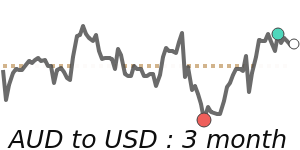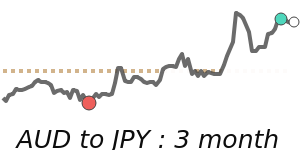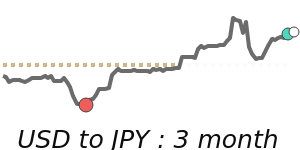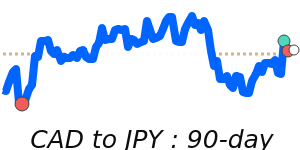![]()
![]() The current exchange rate for AUD to JPY is experiencing volatility, with recent trading reaching 14-day highs near 93.44 and fluctuating within an 11.4% range from 87.14 to 97.05. Analysts note that the Australian dollar (AUD) initially benefitted from stronger-than-expected export data but struggled to maintain its gains amid rising geopolitical tensions and market uncertainty. The announcement of tariffs by U.S. President Donald Trump has created a more cautious sentiment, dampening the appeal of the AUD, a currency that often thrives when global markets are stable.
The current exchange rate for AUD to JPY is experiencing volatility, with recent trading reaching 14-day highs near 93.44 and fluctuating within an 11.4% range from 87.14 to 97.05. Analysts note that the Australian dollar (AUD) initially benefitted from stronger-than-expected export data but struggled to maintain its gains amid rising geopolitical tensions and market uncertainty. The announcement of tariffs by U.S. President Donald Trump has created a more cautious sentiment, dampening the appeal of the AUD, a currency that often thrives when global markets are stable.
Despite the pressures on the AUD, forecasts suggest potential for improvement if the upcoming retail sales figures exhibit strong growth. Commodity prices, particularly iron ore and coal, closely influence the AUD's performance, and traders will be watching these developments closely, especially in the context of Australia's significant trade relationship with China. A booming Chinese economy could provide support for the AUD, while a slowdown may lead to depreciation.
On the other hand, the Japanese yen (JPY) is benefiting from its position as a safe haven amid the trade turmoil ignited by escalating tariffs. Analysts point out that the JPY and Swiss franc have strengthened as investors seek refuge from heightened risk, with the USDJPY pair experiencing a notable decline. While there are concerns regarding the JPY's potential to fully function as a safe haven due to Japan's own economic challenges, it is still expected to outperform more risk-sensitive currencies like the AUD.
Additionally, fluctuating oil prices are impacting the yen, which is sensitive to movements in energy prices due to Japan's reliance on imports. Recent data indicates that oil is trading at 90-day lows of 61.29, significantly below its 3-month average of 70.61. Such trends in the oil market could have downstream effects on the yen and its trade balances.
In summary, the AUD to JPY exchange rate is influenced by a complex interplay of trade tensions, economic indicators, and commodity prices. While the AUD faces challenges from both domestic and external pressures, there remains room for recovery, particularly with forthcoming economic data. Meanwhile, the JPY is poised to benefit from its safe-haven status as geopolitical uncertainties prevail. Monitoring these factors will be crucial for businesses and individuals engaging in international transactions involving these two currencies.
Loading rates...
|
|
|
JPY to AUD Market Data
Japanese yen (JPY) to Australian dollar (AUD) market data - latest interbank exchange rate, trend, chart & historic rates.
Compare & Save - Japanese yen to Australian dollar
Exchange rates can vary significantly between different currency exchange providers, so it's important to compare Japanese yen (JPY) to Australian dollar (AUD) rates from different sources before making a conversion.
Use our JPY to AUD calculator to see how much you could save on your international money transfers. makes it easy to compare the Total Cost you are being charged on Yen to Aussie currency rates and the possible savings of using various providers.
| Date | JPY/AUD | Period |
|---|---|---|
19 Apr 2025 | 0.0110 | 2 Week |
02 Feb 2025 | 0.0105 | 3 Month |
03 May 2024 | 0.009896 | 1 Year |
04 May 2020 | 0.0146 | 5 Year |
06 May 2015 | 0.0105 | 10 Year |
08 May 2005 | 0.0123 | 20 Year |
Will the Japanese yen rise against the Australian dollar?
It is almost impossible to predict what an exchange rate will do in the future, the best approach is to monitor the currency markets and transact when an exchange rate moves in your favour.
To help with this you can add JPY/AUD to your personalised Rate Tracker to track and benefit from currency movements.
Rather than requiring you to set a target rate, our Rate Alerts keep you informed of recent trends and movements of currency pairs.
Add rates to your Rate Tracker and select to receive an daily email (mon-fri) or when a rate is trending
Related exchange rate forecasts
BER articles that mention the Australian dollar (AUD):
Wise Review: Is It the Best Way to Transfer Money Internationally?
The Wise Account allows users to hold and convert funds in 40 different currencies and send and spend internationally, all at the “real” exchange rate and with exceptionally low service fees. Users can also receive major-currency payments free of charge.
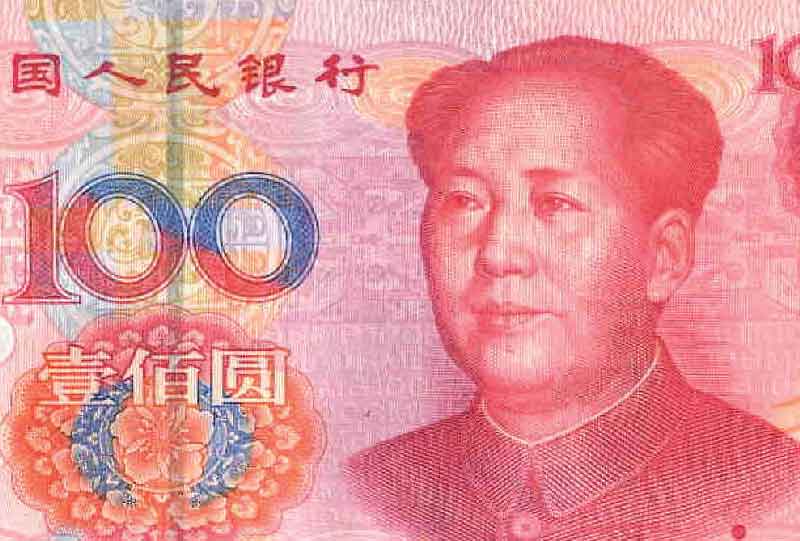
Yuan's Volatility Surges Amid U.S. Tariff Escalation
The Chinese yuan has weakened following the United States' decision to impose a 125% tariff on Chinese imports, prompting the People's Bank of China to intervene to stabilize the currency.
Further reading on the Australian dollar (AUD) - Guides, Reviews & News from our research team.
Forecasts disclaimer: Please be advised that the forecasts and analysis of market data presented on BestExchangeRates.com are solely a review and compilation of forecasts from various market experts and economists. These forecasts are not meant to reflect the opinions or views of BestExchangeRates.com or its affiliates, nor should they be construed as a recommendation or advice to engage in any financial transactions. Read more
